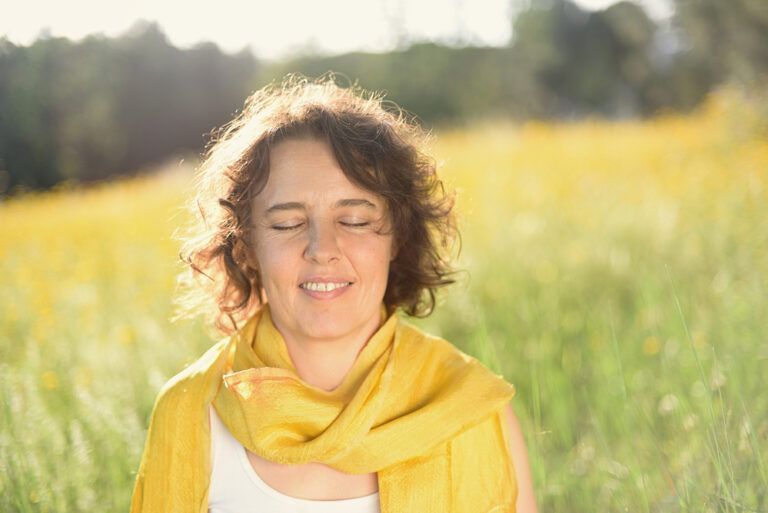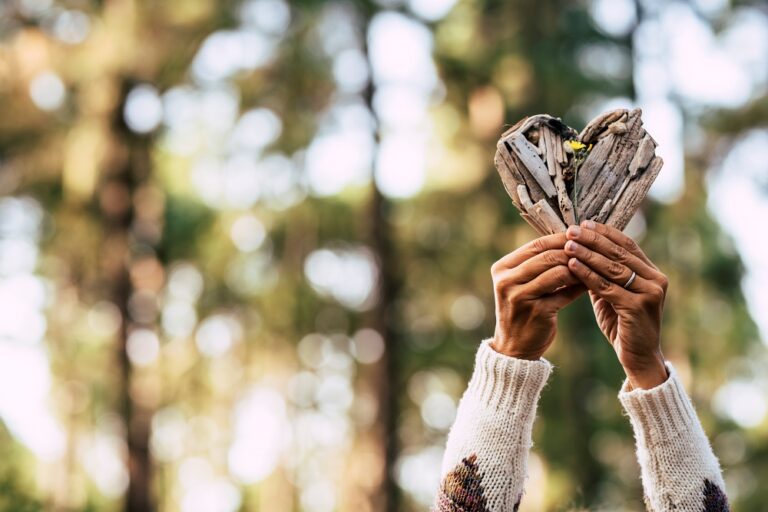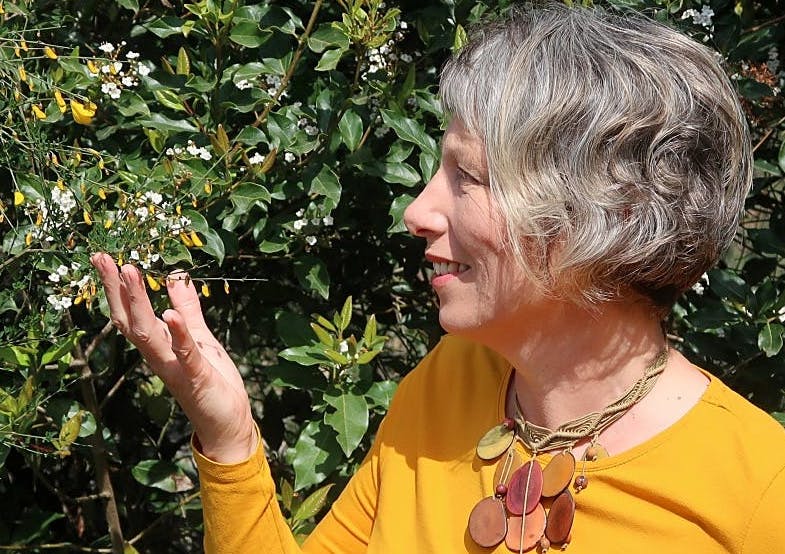What Forest Bathing Is & Why You Should Do It
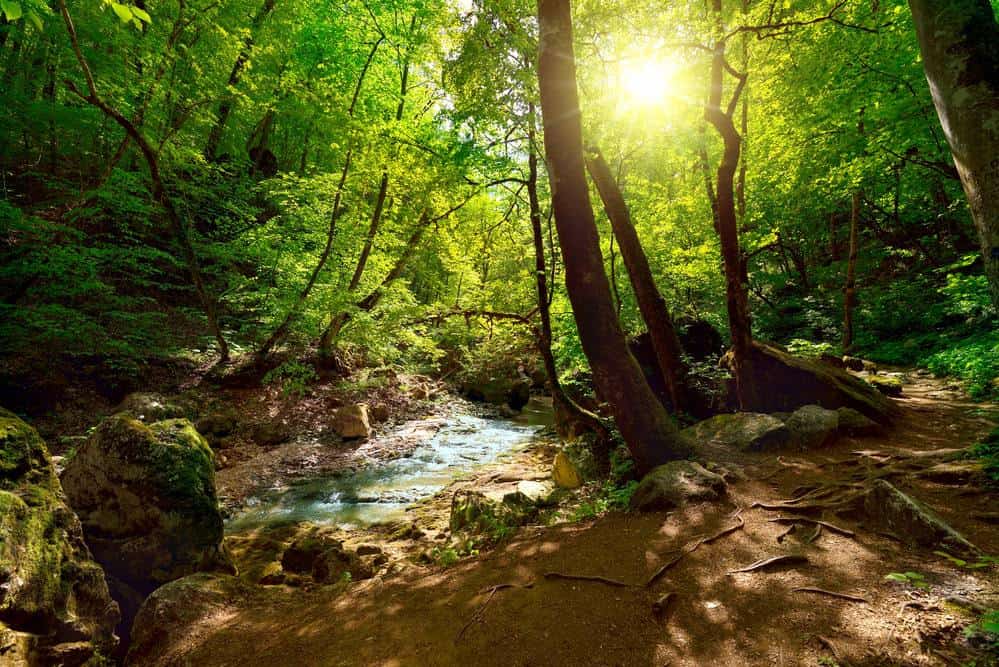
You may have come across the term forest bathing and be wondering what exactly it means. Do you need a bathing suit? Is water involved? Do you need to get naked to go forest bathing? The short answer to these questions is no, although you could do all of those things in your own forest bathing practice if you want to and it’s both safe and permitted!
I find it less confusing and restrictive to use the term ‘nature connection for wellbeing’, which is what forest bathing boils down to.
As well as benefiting from the physical properties of natural settings, during forest bathing we get to reignite our sense of childlike wonder, reconnect with our true selves and develop love and compassion for other living things, be they fellow humans, animals or plants.

What is forest bathing, aka Shinrin-yoku?
The phrase forest bathing comes from the translation of the Japanese term Shinrin-yoku. Shinrin means ‘forest’ and yoku means ‘bath’ or ‘immersion’. Stressed-out city dwellers in Japan have been immersing themselves in the restorative environment of the forest for over 40 years, with clear results.
Numerous studies, both of the Japanese methodologies and other forms of being with nature, show that spending time in and engaging with nature does wonders for your mental, emotional and physical wellbeing. It’s hardly surprising that the practice of forest bathing has spread to the west.
Health benefits of forest bathing
There are many studies showing that simply being outside in nature is good for us. When we’re comfortable in a natural environment, our nervous system switches from the ‘high alert’ status to the parasympathetic nervous system, which tells our bodies that it’s safe to ‘rest and digest’.
Not only does this reduce the stress hormones that wreak havoc with sleep and blood pressure, it also helps calm the mind and reduce mental chatter.
Spending time in green spaces is associated with lower blood pressure, better sleep quality, reduced stress levels, improved moods, and increased feelings of happiness. It also helps reduce symptoms of depression and anxiety and improves cardiovascular health and your immune system.
From an emotional wellbeing perspective, connecting with nature boosts your sense of purpose, autonomy and resilience. Your creativity and access to positive emotions also improves.
The effects of forest bathing last long beyond the time in nature itself; days, weeks and even months in some cases.
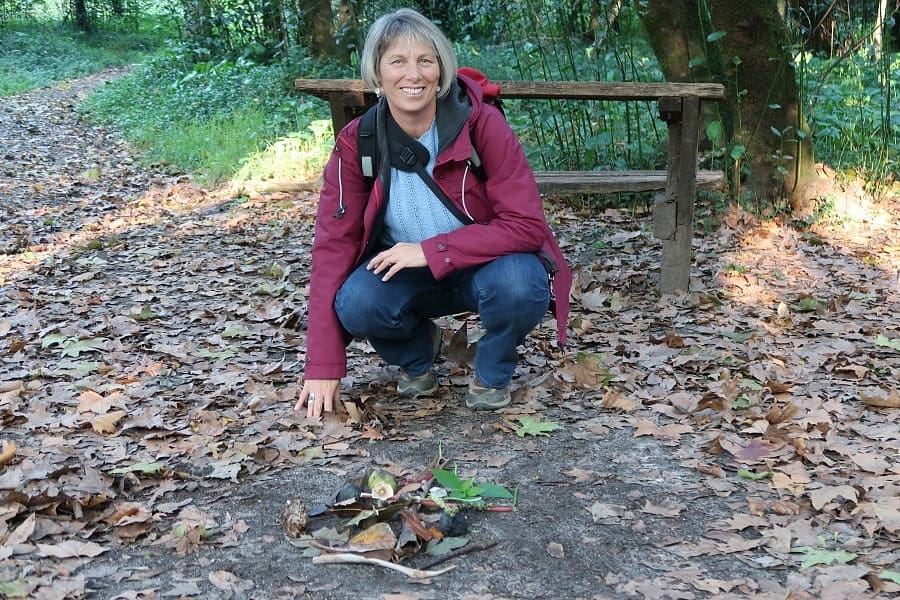
Being in vs with nature
There’s a difference between spending time in and spending time with nature and that’s where the nature connection aspect of forest bathing comes into play.
As this study found, engaging with the natural world on a sensory, emotional or meaningful level brings more health benefits than simply doing other things outdoors without paying attention to the nature around us.
Do you need a forest for forest bathing?
No, in fact you don’t even need a tree! At least not the way I have been trained to do it and guide people.
You can get most of the health benefits of forest bathing by doing certain activities in other natural settings, including urban parks and home gardens, or even indoors. You just need some undisturbed time and access to nature.

How do you forest bathe?
Forest bathing is all about slowing down and using your senses to connect with yourself and the environment around you. To get the most from the experience, you need to be free from your day-to-day distractions so that you can become fully absorbed in the nature connection activities.
You can choose to take part in one of my guided walks or take yourself to a natural spot and experiment with what makes you feel more connected.
Start with some relaxation techniques, such as a breathing exercise or meditation, then tune into each of your senses. Listen to what your body is telling you and be open to what nature can teach you about life.

What makes a guided nature connection for wellbeing session so special?
While it’s perfectly possible to have a wonderful forest bathing experience on your own, there’s a lot to be said for sharing that with others, whether that’s one to one with a guide or in a group.
If you choose a certified forest bathing guide (like me!), they will gently and skillfully take you gradually deeper into the experience without you having to think about anything.
The guide is there to facilitate a deeper relationship between you and the rest of the natural world but how you interpret their invitations and interact with nature is a deeply individual experience.
When I am guiding, I aim to encourage your experience of pleasure and stimulate positive emotions such as awe, wonder, peace, gratitude and joy.
You will have opportunities to share what you’ve noticed with fellow forest bathers and witness different observations, which may make you see things differently. Silence is also welcome so don’t feel under pressure to talk if you don’t want to.
This sharing phase simply allows for reflection and integration before rushing headlong into the next activity, which is what a lot of us have a tendency to do in our hectic lives.
If it’s an in-person forest bathing walk, your guide should have meticulously planned the route ahead of time to make sure it’s safe and suitable, and that it offers a variety of spaces and ways to notice and engage with the natural world.
In some cases, the walk may end with a tea ceremony or another closing ritual.
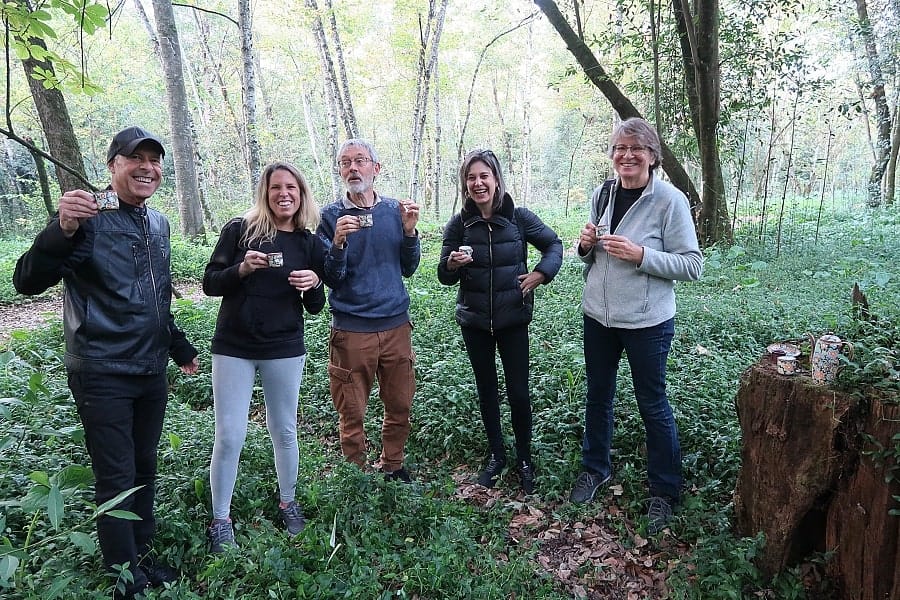
Can you have a good forest bathing experience online?
Yes! As well as being a guide, I’ve participated in several forest bathing sessions and always felt more relaxed and at peace as a result.
Recent studies by Derby University in the UK have shown that you don’t need to be in a pristine ancient forest to get the benefits. They found that even online forest bathing significantly reduced anxiety levels and rumination (i.e. going over and over an issue in your mind, which I know a lot of us are prone to doing).
The researchers measured other things like compassion, social connection and heart rate variability, all of which improved with both on and offline forest bathing.
For an online (remotely guided) forest bathing session, you will choose your location – the guide will give you tips to help you pick somewhere suitable and safe.
On the day, you’ll be guided through a series of activities and invitations to explore the natural environment around you then given the chance to share with other participants using Zoom.
The benefits of doing online forest bathing are that you can do it year-round without having to worry about it being cancelled because of the weather.
You also don’t have to travel anywhere unless you want to – your garden or local park is ideal. Being in the same spot as the seasons change helps you to really get to know your local envirnoment and tune into nature’s cycles and rhythms.
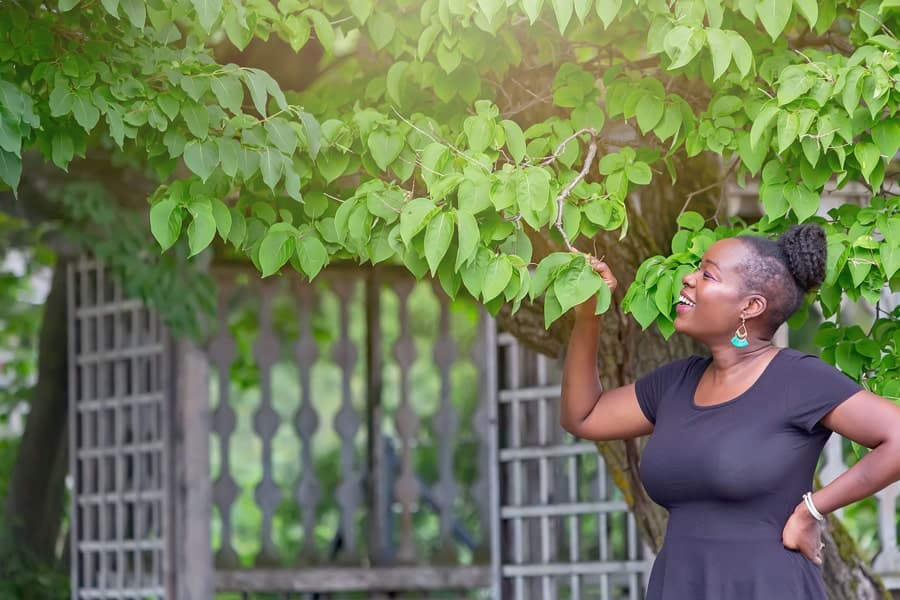
Is forest bathing the same as mindfulness?
There are lots of similarities but in the method I practice and guide people in, the invitations are deliberately open to interpretation so you are not being directed to focus on a specific thing.
Instead, you let yourself be drawn towards something and absorb yourself in it for as long as it feels pleasurable for you.
How long does it take to do a forest bathing session?
Nature connection for wellbeing is something you can sprinkle into your day, taking a few minutes here and there to be with and focus on nature. For a deeper experience, a session could last from 30 minutes to 2-3 hours.
I wholeheartedly recommend trying a session of around 2 hours if you can, on a regular basis, especially if you have a stressful life. This extended timeframe allows you to switch off from your cares and worries and really slow down and connect.
The key here is to do it so find a way that suits you and your lifestyle. I can help you create a personalised nature-based wellbeing plan on one of my workshops, programmes or retreats.
What to wear for forest bathing
The most important thing is comfort, wherever you are. If you’re going on a guided forest bathing walk, you probably won’t be walking very far, perhaps 1-2 miles over 2-3 hours. Because of the slow pace, you may need more layers than usual to stay warm as you won’t be moving around much.
Always wear comfortable footwear and, depending on where you are and the weather, a hat may be a good idea. If it’s raining, wear waterproofs so that you can stay dry and warm. In warmer weather, you may need sun cream and insect repellant.
What to take with you
Carry a bottle of water and snacks, or a packed lunch for longer excursions.
If you’re going alone, do take your mobile phone with you in case of emergencies but have it on silent so you don’t get distracted and keep it in your pocket. Forest bathing is not about photographing everything for Instagram, it’s about being fully present in the moment.
Take a map of the trails if you’re not with a guide.
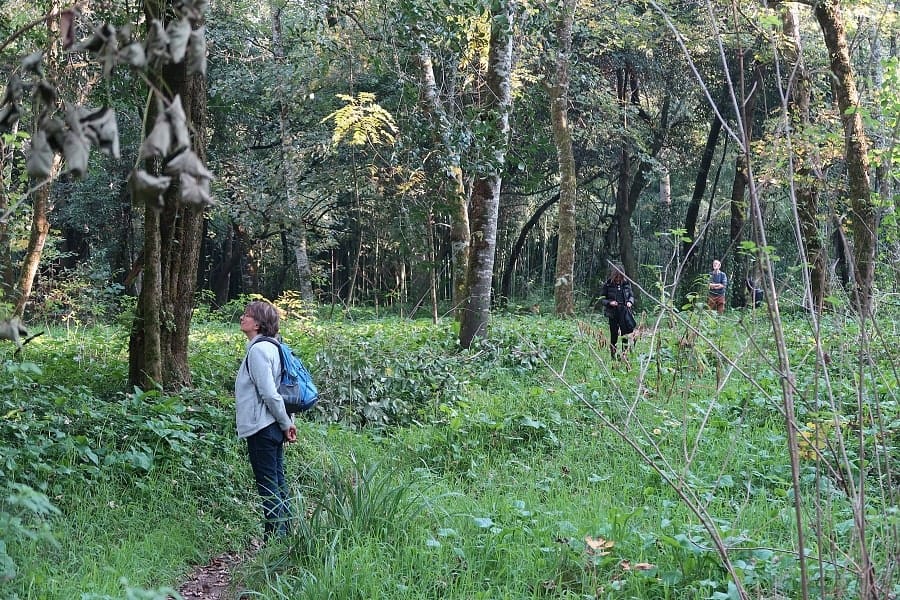
What else do you need?
An open mind and a willingness to let your inner child take over for a while. You also need to slow right down. This is often the hardest thing for participants to do, especially those who are always on the go and trying to multitask at every turn.
Things to be careful of
If you are not 100% certain that something is safe to touch or ingest, leave it alone!
On a guided walk, your guide should have made themselves aware of any potential dangers from wildlife or the trail that you need to know about. If you’re doing this independently, be sure to know the risks before setting off.
Make sure you have permission to be on the land.
By all means, touch things and get creative but also be respectful of other living beings. Avoid picking plants or disturbing natural habitats.
If you’re alone in a forest, stick to the marked trails so that you don’t get lost or damage plantlife.
What’s the difference between forest bathing and forest therapy?
This depends on who you ask. For some practitioners, nature itself is the therapist and therefore going into nature to connect and be open to its healing properties counts as forest therapy.
I certified as a Forest Bathing Guide with Forest Therapy Hub (FTH) and, being heavily grounded in the science of nature connection, they make a distinction between forest bathing and forest therapy. The former is suitable for anyone and is primarily a wellbeing practice in the same way that yoga, healthy eating and meditation are.
Forest therapy, in FTH’s view, is for specific groups of people that have certain needs, e.g. mental illness, clinical depression, victims of domestic abuse etc. and should be carried out by qualified health professionals who have gone on to do their Forest Therapy Guide training.


